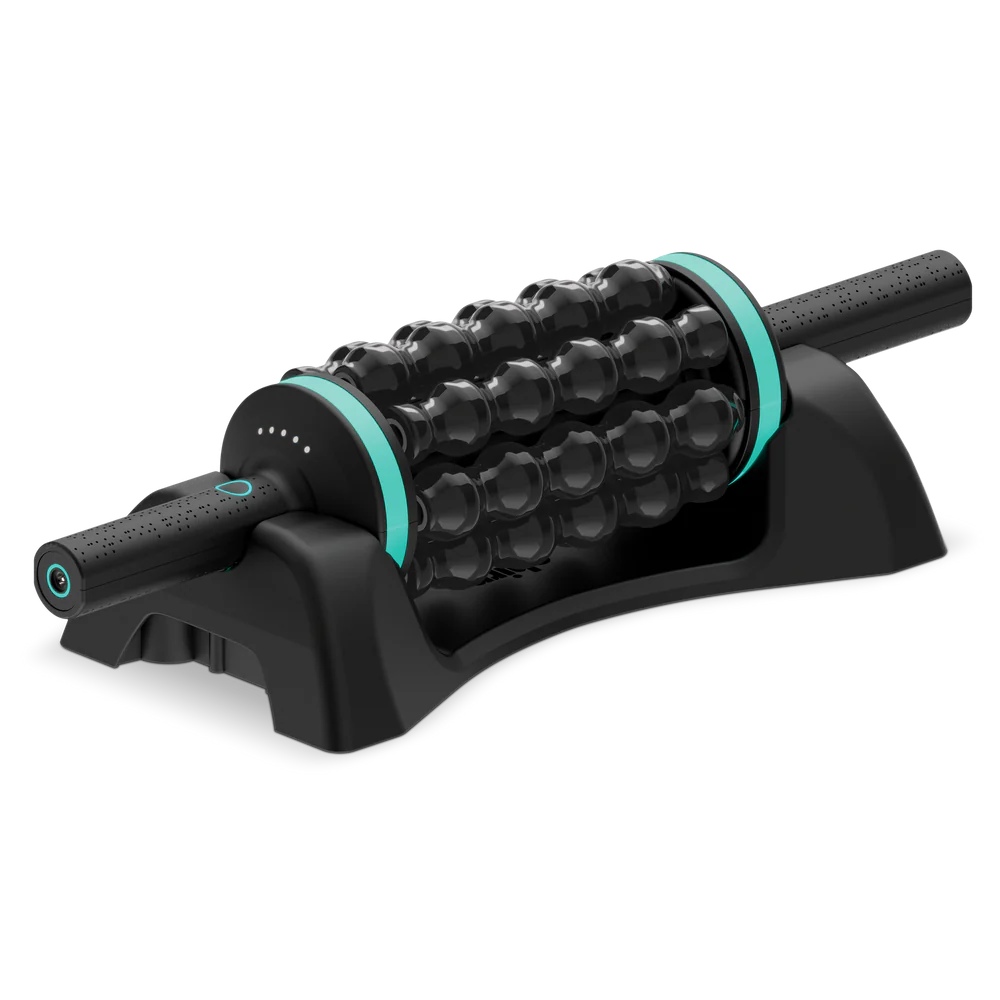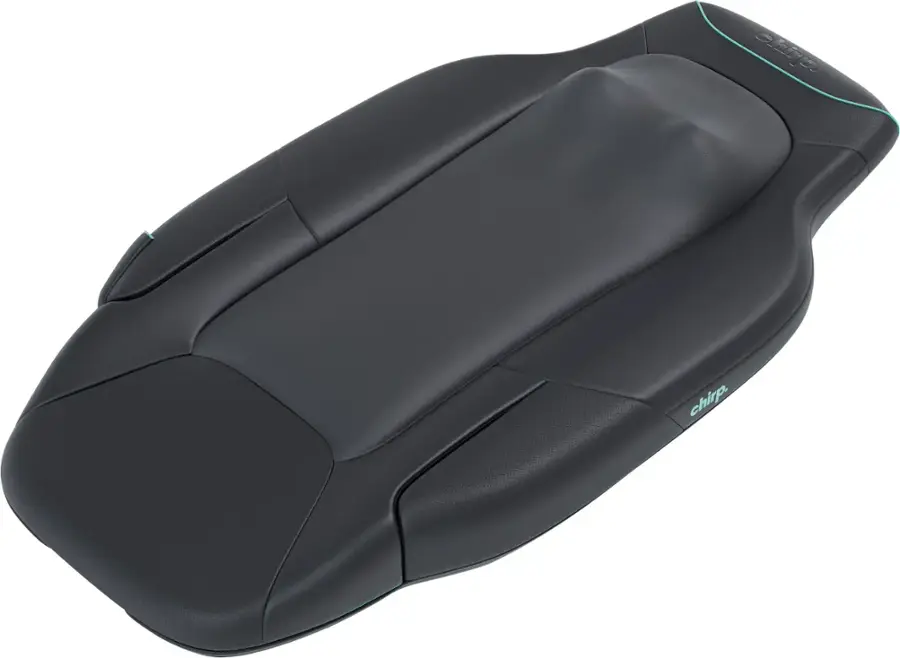Okay, I’ll be the first to admit that I historically have not been the best when it comes to muscle recovery and stretching. For whatever reason, it was just never something I thought was too important.
Now at almost 30 years of age with increasingly tight muscles (no thanks to years of me neglecting them), I’ve begun to care a little bit more about this obviously important part of my health, mainly utilizing both my Theragun Mini and foam roller, and even booking the occasional massage.
Still, I was on the hunt for something just a little more than what my trusty tools had to offer.
Enter the Chirp RPM.
When I heard about how it was essentially all of the best parts of a massage gun and foam roller in a more robust package, I knew I had to try it.
What is the Chirp RPM?
While Chirp is probably best known for their innovative massage wheel that gained initial popularity on Shark Tank for being extremely effective while utilizing no technology whatsoever, the Chirp RPM signifies the company’s sizable step into the automated muscle recovery tool space.
I’m sure I’m not the only one who initially thought that the “RPM” in the name stands for the usual “Revolutions Per Minute”, especially given the unit’s unique shape/design that is akin to an oversized futuristic kitchen rolling pin with eight additional beaded rollers that make up the middle of the body.
In this case, the “RPM” actually stands for “Rolling Percussive Massager”, which is a much more adequate descriptor for the unit.
When the unit is on, the beaded rollers in the middle of the unit spin freely, while the larger main cylinder that houses them also rotates on a motor at differing speeds. It has five separate speeds in which it spins, with 1 being the least intense and 5 being the most intense. It also has a switch that can reverse the direction that it spins.
Simply turn the power on, press and hold the Start Trigger, select your speed, reverse the direction if you’d like, and apply to where you need it.
That’s it. It’s really as simple as that.
The Chirp RPM is a unique blend of percussive massager and foam roller in one. The power behind it is nuts, and we've found it especially therapeutic on our feet and quads.
First Impressions of the Chirp RPM
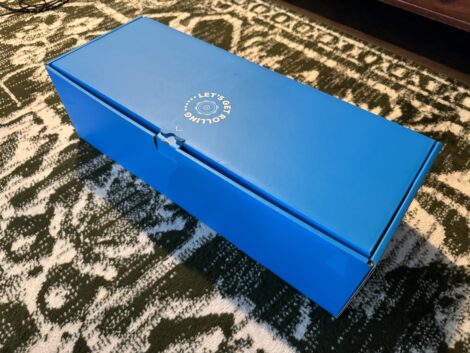
Presented in simple, neat, and attractive light blue packaging, the Chirp RPM was incredibly easy to unbox and get rolling (pun intended).
The directions for use are fairly simple and are printed inside the packaging itself for quick and easy reference. It takes next to no time to get the hang of using it, but since I naively thought the stand was simply part of the packaging initially, it took me visiting the Chirp website to see that the stand is actually meant be used in conjunction with the unit to stabilize it while on the ground.
I’ll chalk that one up to user error.
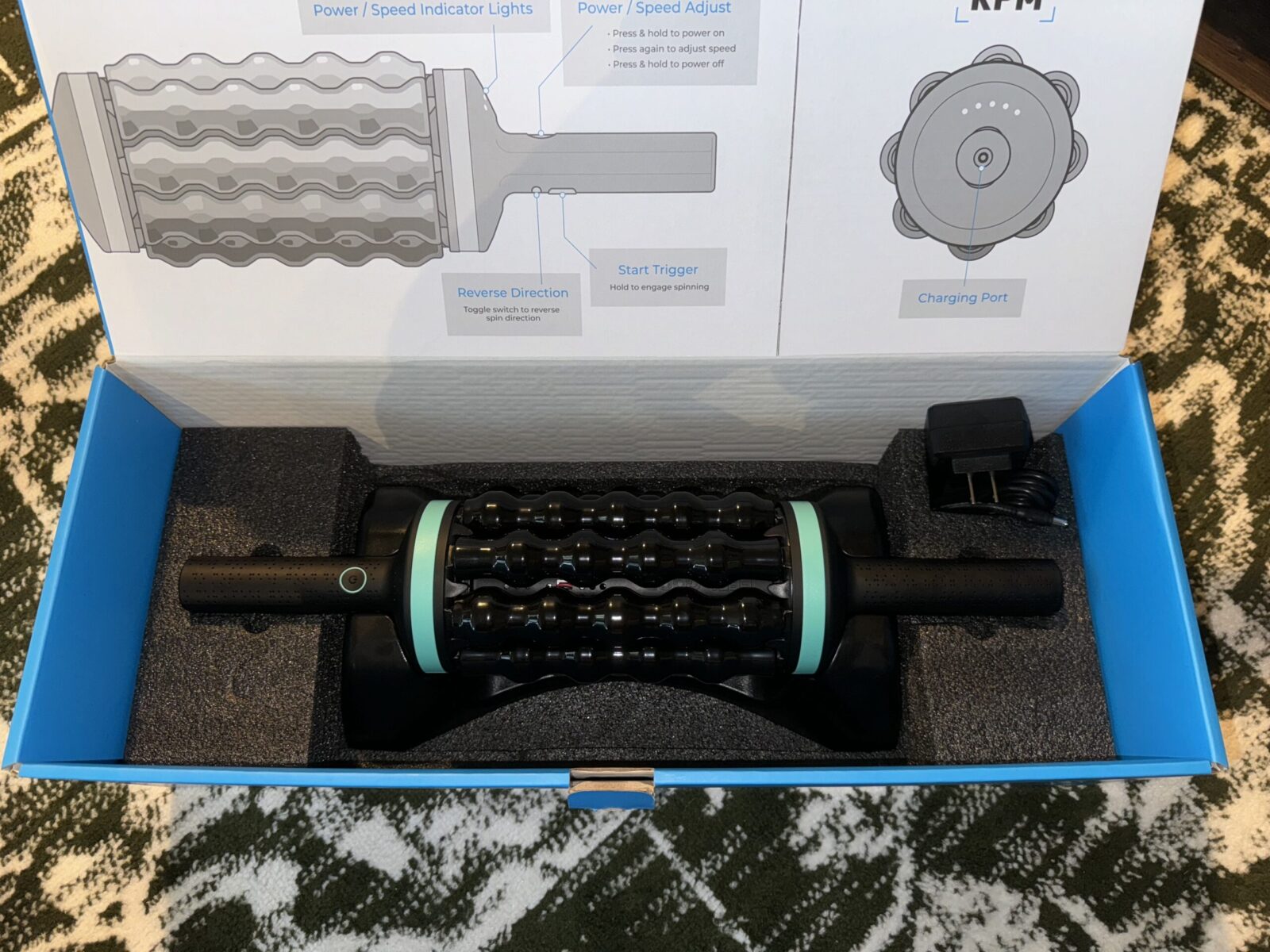
The unit itself is fairly cumbersome, measuring just about 20 inches long, 5 inches wide in the middle, and 7 inches tall when propped up on its stand. It’s also not exactly the lightest recovery tool out there, weighing in at a fairly hefty 3.7 pounds without the stand and just about 5 pounds with the stand.
While I likely won’t be taking this with me on any ski trips to recover after long days on the slopes, it’s a great addition to my home recovery regimen.
My initial thought upon unboxing the Chirp RPM was that the handles, buttons, and casing felt high quality and worthy of the price point, but the plastic beaded rollers in the middle left a little to be desired.
That said, once I started actually using the unit it became clear that the plastic is indeed high quality and well-made, albeit a little hard (more on that later).
Now it was finally time to see if this thing could really loosen up these tight muscles of mine.
Using the Chirp RPM – Does it Really Work?
The main knock on traditional massage guns is their effective area of impact, usually only offering a few square inches of area to work with.
The Chirp RPM has you covered there. Literally.
With the rollers being just a hair over 7” long and the main cylinder offering an aforementioned diameter of 5”, the Chirp RPM does a masterful job of covering larger swaths of muscles – mainly your back, calves, quads, forearms, and feet.
Oh man does it work well on your feet. More on that in a bit.
My quads tend to be one of the areas that need the most help loosening up, so it was a natural spot to start with the Chirp RPM. Using the unit in the same way that I would if I was trying to roll my upper leg into dough for a pizza, I cranked the setting up to the third level of intensity and began rolling.
Okay, the third level is indeed powerful. A little too much so for an initial introduction. I bumped it down to the second level, which gave me more of the ideal hurts-so-good effect.
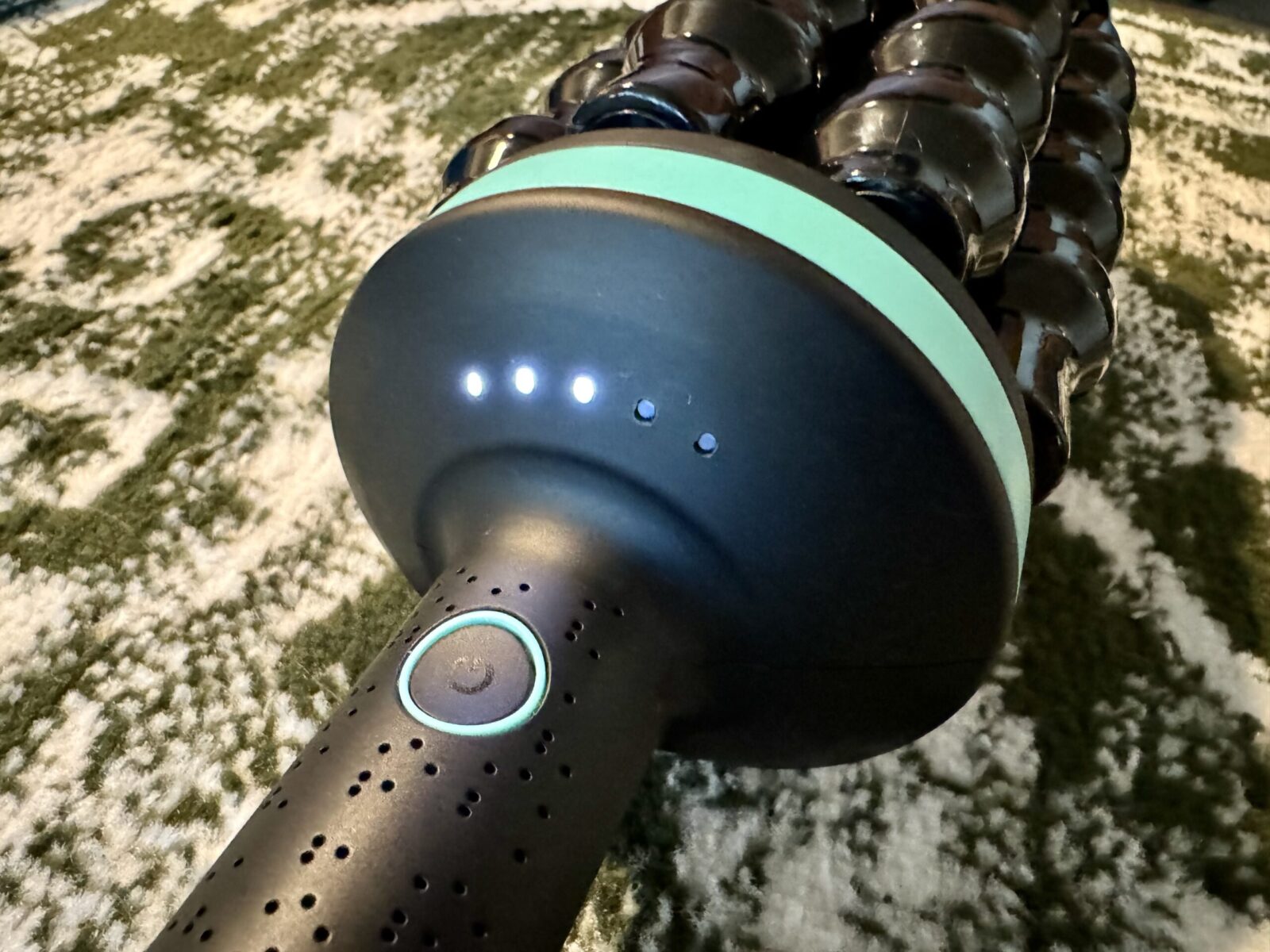
Yeah, this thing works and works well.
I continued to free-wheel with it more on my quads and eventually moved onto my calves and the back of my neck.
I attempted to use it on more of my upper body, but due to the nature of the unit I found it a little difficult to apply the right pressure in some of the harder-to-reach spots, especially when having to use one hand.
As I had previously mentioned, it took some digging for me to discover that the stand works in conjunction with the unit (again, user error. Duh!), but once that discovery was made, it led to one of my favorite uses for the Chirp RPM.
Hands-free foot massage.
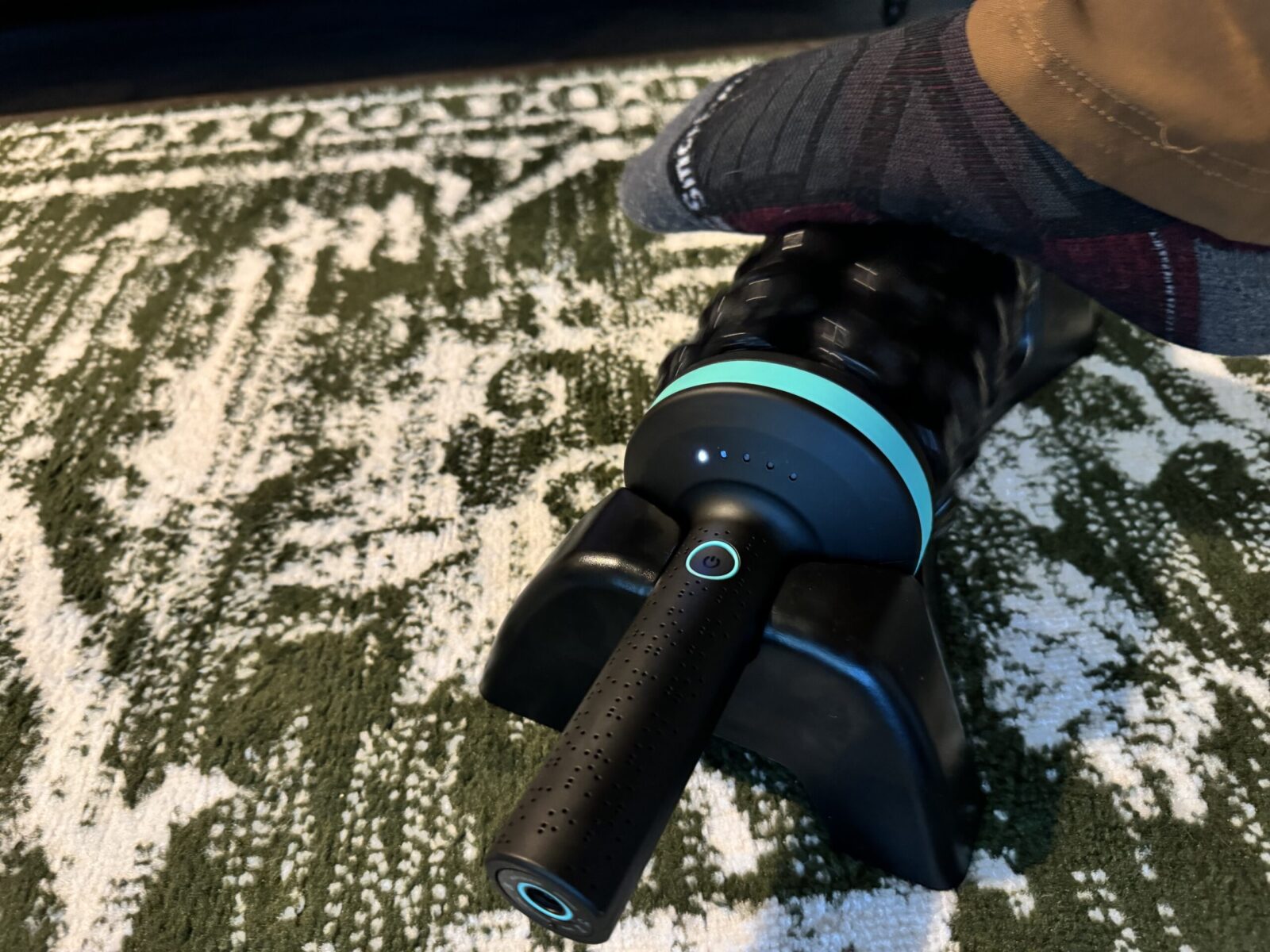
To get the unit into hands-free mode, place it on the stand with the Start Trigger facing down so that the stand compresses the button, then simply hit the Power button and the rollers will automatically start spinning.
For me, this is almost worth the price of the unit alone.
As someone who has high arches in their feet and who will almost certainly struggle with plantar fasciitis at some point down the line, my feet tend to take a beating. One of my main uses for my Theragun Mini is for my feet, but if that’s all I used it for, then I could almost throw it away entirely for the Chirp RPM.
After a few minutes in hurts-so-good foot massage nirvana, my feet were feeling looser than they’ve been in months.
As good as it feels, I did find to use the Chirp RPM for this sparingly, as it can make your feet pretty sore if they’re not used to it (I found that out the hard way). That said, this will be part of my weekly recovery routine, as it’s entirely too easy to simply place my feet on the unit for a few minutes while watching TV or reading a book.
The hands-free aspect of the Chirp RPM also works well for calves, back, and forearm recovery, but as I said, the way it works on feet is almost worth the price in and of itself.
Chirp RPM vs. Theragun Mini
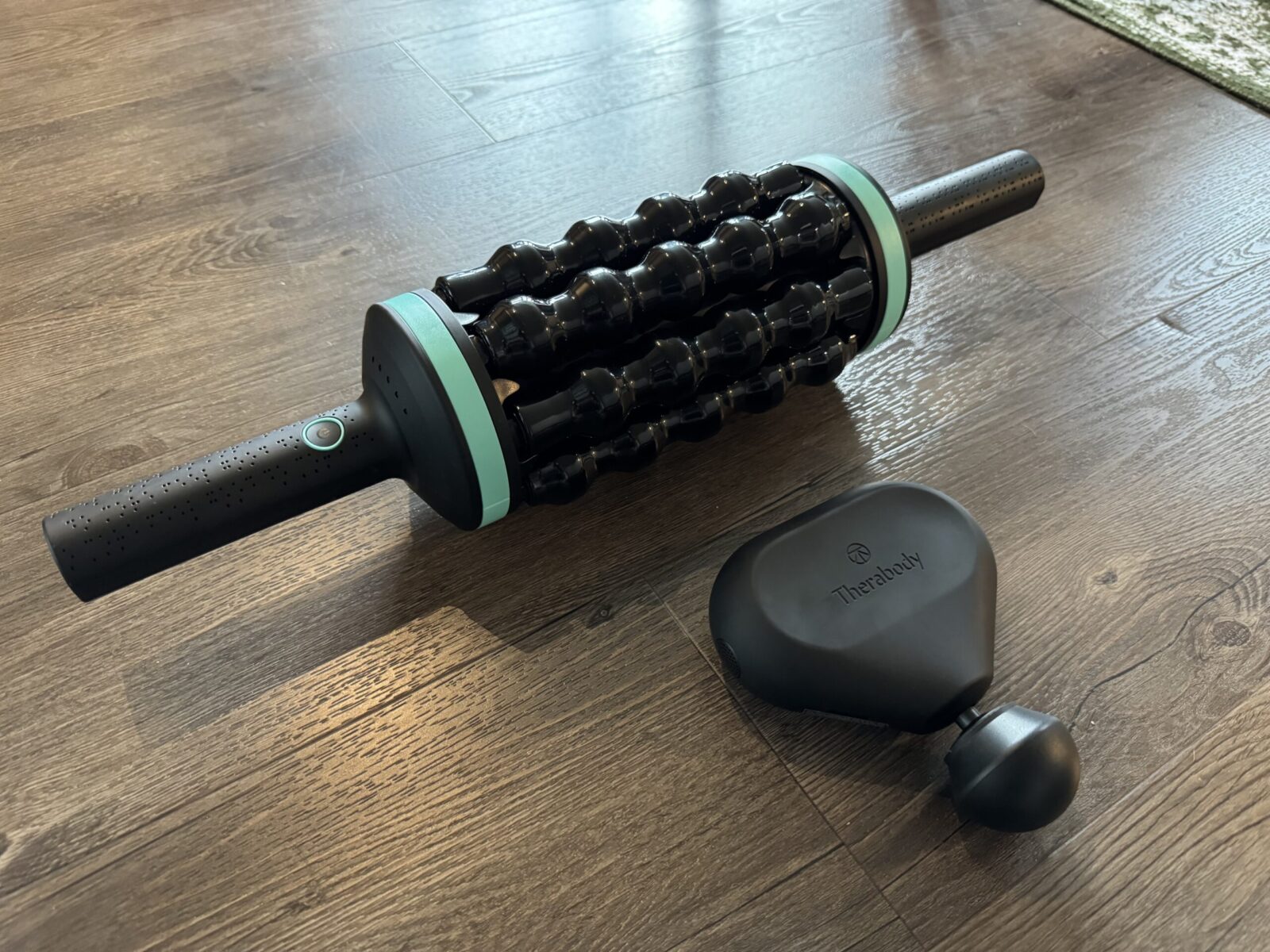
As I had mentioned earlier, my main home recovery tool for years now has been the Theragun Mini – something we’ve actually reviewed on the site before.
While the Theragun Mini may be more akin to the Chirp RPM Mini (which I have not seen in the metal yet), it’s still worth comparing the Theragun Mini to the full-sized Chirp RPM.
First things first, there will obviously be a big size difference here. I find that the Theragun Mini is great to travel with, as it comes with me on just about every golf or ski trip that I go on (unless I forget it by accident, which does happen!).
Contrarily, it wouldn’t be an easy task to pack up the Chirp RPM and lug it through TSA or even pack it in a suitcase, so it will stay as the keystone part of my home regimen.
Coming with the territory of simply being a larger unit, the Chirp RPM is also considerably louder than the Theragun Mini. The Theragun isn’t necessarily quiet either, but I would feel a little more comfortable using it in a more public space than the RPM.
The main thing that the Chirp RPM has going for it vs. the Theragun Mini is the pure surface area of muscle that it can cover. Just one bead on one of the rollers on the Chirp RPM is about the same size as the effective area of the Theragun Mini, so for widespread relief and recovery, the Chirp RPM beats the Theragun handily.
While I think it would be more fitting to compare the Chirp RPM to the full-sized Theragun and then compare the Mini versions of each, but since I haven’t properly used a full-sized Theragun or the Mini RPM I’m simply working off what I have.
That said, any athlete would have a lot of their recovery needs met between the Chirp RPM as a home unit and the Theragun Mini for travel. I know that’s how I’ll continue to use my dynamic duo going forward.
Final Thoughts on the Chirp RPM
While the Chirp RPM will no doubt become a mainstay in my weekly home recovery regimen, that’s not to say it’s without a few factors that could be improved upon.
As mentioned earlier, it’s relatively clunky compared to other massage guns. Its weight and size can make it seem a little unwieldy, which may be a deterrent for some looking to use it to travel with or get some hard-to-reach spots on their upper bodies.
It is worth noting again that Chirp makes a more compact RPM that I’m sure provides a nice complement to its big brother, and I would think would be worth checking out if the size of the standard RPM is a worrying point.
It’s also a little on the noisier side, which is not necessarily a detractor for me but worth pointing out. It’s nothing cranking the TV up a notch or two while using can’t nullify, though.
Finally, the plastic beaded rollers are made of hard plastic. They’ll have no issue digging through the deepest of tissue (especially on the higher intensity settings), but part of me wonders what the unit would be like if it utilized a firm rubber similar to the tips on other massage guns instead of the hard plastic.
That said, once your comfort zone with the intensity and pressure levels, the RPM really works wonders on muscles past the extent that traditional massage guns or foam rollers do.
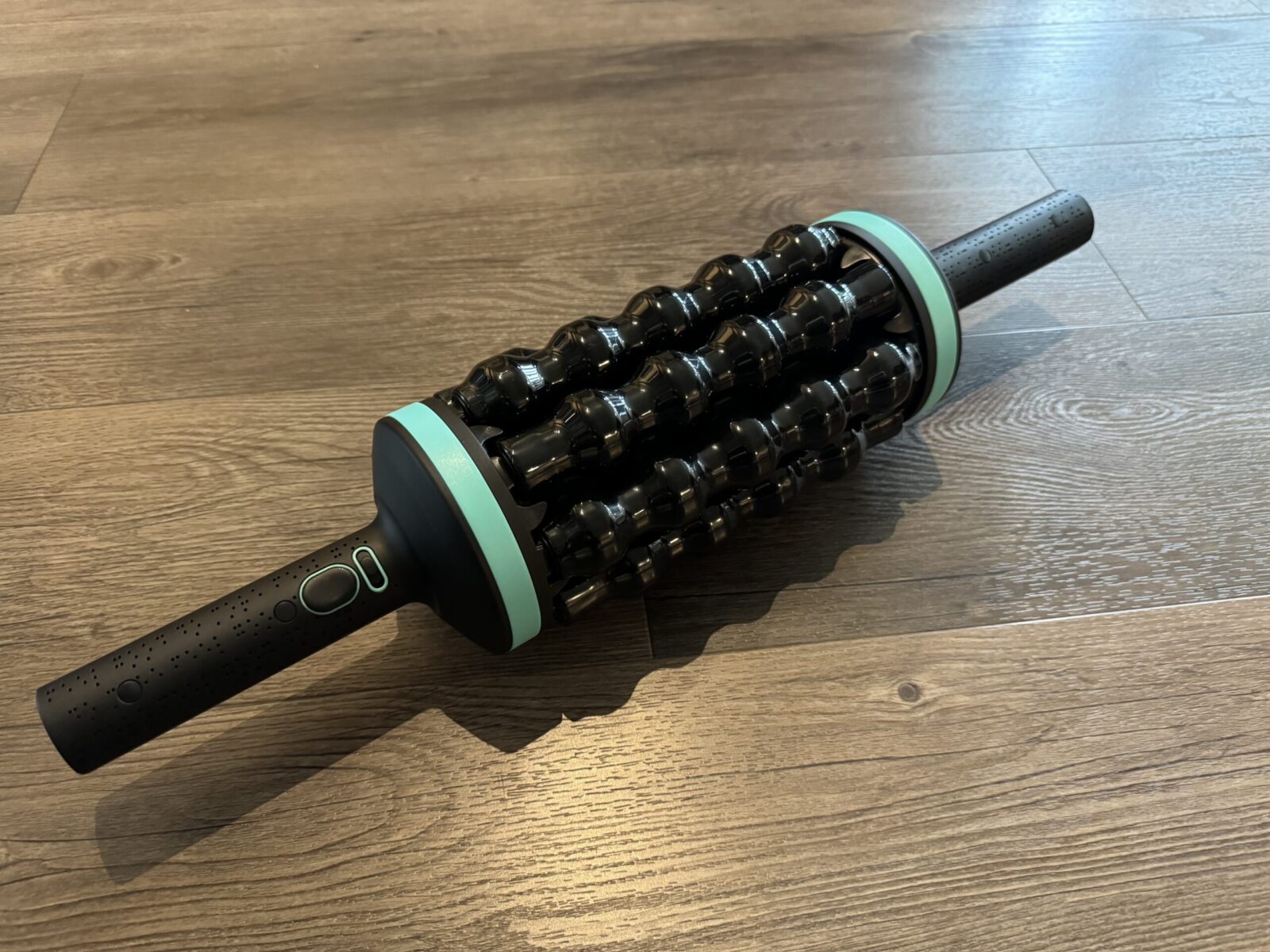
At $250, the Chirp RPM is certainly on the more cost-effective side of recovery tools and for me, the price feels right here.
If you’re looking to focus more on your back rather than your extremities, I can’t recommend the Chirp Contour Decompression and Massage table highly enough. It blew away my expectations, and has received much more regular use in our home when compared to the RPM.
As a bonus, if you buy one, you can (as of Fall 2025) get an RPM mini for free, which is a pretty killer deal.
This thing totally surprised me. It's fantastic. It gives many of the benefits of massage chairs costing 10-20x as much in a surprisingly compact package. Highly recommended. It's even better that you can get the RPM Mini ($150 value) for free.
That said, I’m hard-pressed to think of a recovery tool that provides relief for large swaths of muscle with ease, and I envision the Chirp RPM being the perfect tool for hardcore athletes who are consistently logging lots of miles, lifting lots of weight, or otherwise straining muscles on a weekly basis.
If you’re serious about your muscle recovery or, in my case, want to squelch plantar fasciitis symptoms before they become too big of an issue in the future, I would highly suggest picking one up and getting rolling. You won’t regret it.
The Chirp RPM is a unique blend of percussive massager and foam roller in one. The power behind it is nuts, and we've found it especially therapeutic on our feet and quads.
This page contains affiliate links. This means that if you click a link and buy one of the products on this page, we may receive a commission (at no extra cost to you!) This doesn’t affect our opinions or our reviews. Everything we do is to benefit you as the reader, so all of our reviews are as honest and unbiased as possible.
Recent Updates:
September 29th, 2025: Updated to add reference to the Chirp Contour Massage Table.

